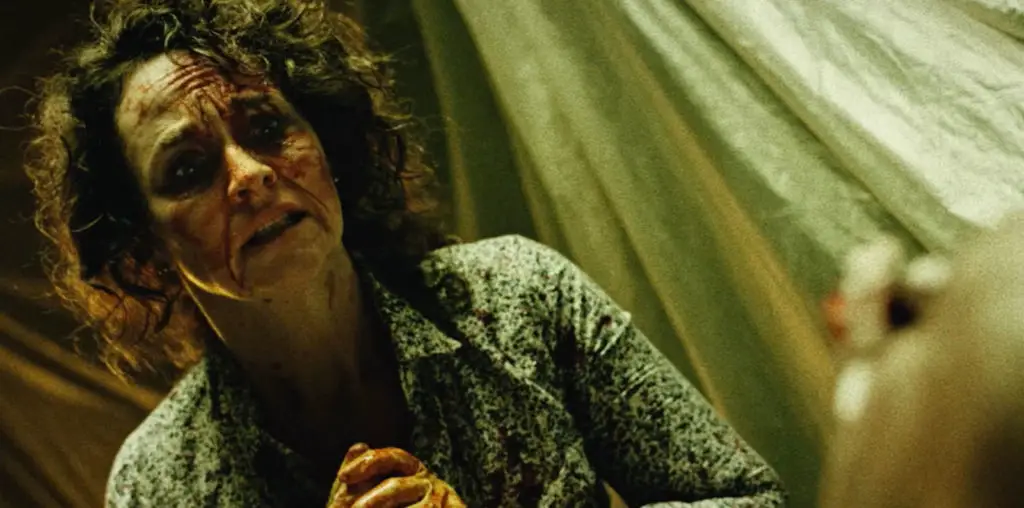
This amusing video about female stereotypes also has some serious points to make. Each brief section of the video presents a particular cliché about femininity, represented by a collaged iconographic figure, with arms, legs, torso, and face all taken from different sources of found footage, and composited together with an artfully crude look which resembles a torn-paper collage, making the whole figure look rather like those “exquisite corpse” games in which different parts of the body are drawn by different artists.
These visual elements have simple, looping movements. The soundtracks also are collages of looped found sound elements.
For example, the first Hag, named “High Maintenance,” has a soundtrack of feminine screams of exaggerated helplessness mixed with striptease music, and the various parts of the figure are taken from cheesecake movie stars who throw up their diamond-covered arms, screech, and demand male attention.
The second Hag, “Paranoia,” has paranoid Joan Crawford eyes, and has a body made of a collage of hands inspecting parts of the body. A woman’s voice, in the looped soundtrack, obsesses with worry over “how I look, how I feel, how I smell…”
One of the most haunting sections is “Smoke and Mirrors,” which shows a collage of the black-and-white heads of glamorous, depressed film noir heroines, all smoking cigarettes. The heads, hands, and cigarettes all waver, as if made of smoke. They continually rise and collapse from a burning fire, while the soundtrack plays lonely whistling wind and odd moaning sounds. The women’s faces occasionally shatter like glass and fall to the ground.
This section reminded me of the solace but also intense depression that can accompany the (self-destructive) lonely act of smoking. I couldn’t help but think of Laura Nyro’s song “I am the Blues,” with it’s opening lines: “Cigarettes/ I’m all alone with my smoke and ashes.”
The subject of “The Chaos Hags” seems not to be so much the effect of feminine stereotypes on male perception, but more on women themselves, as they become trapped in “loops” of chaotic and self-destructive behavior, while trying to live up to society’s expectations. The humorous and affectionate, but also pointedly critical look which Egan takes at these female specters implies that by recognizing them for the ridiculous traps that they are, women will be able to free themselves from them.
Because of the static looped nature of these images, each of which represents a particular state of being, they look more like video installations for a gallery than like a theatrical film, and, indeed, they have been shown as an installation piece at the Kasseler festival in Germany. But the theatrical version also plays well, and won an award at Ann Arbor.
